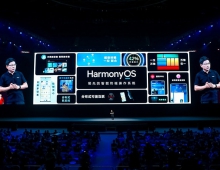
Huawei Unveils The openEuler CentOS-based Linux Distribution
Huawei has released the source code of the openEuler distribution of Linux based on CentOS to Gitee, a Chinese alternative to Github.
The operating system was formally launched by Huawei in September 2019 in response to US sanctions.
Currently, Huawei enjoys a three-month Temporary General Licence enabling it to continue trading with US organisations, licence free, which will expire in February. By that time, the Department of Commerce is expected to be able to support the 300-plus applications that Huawei's inclusion onto the Entity List has attracted.
As shown by Gitee, openEuler includes two organizations, one for source code and the other for packages sources. Currently it shows that there are 20+ repositories in the source code organization. The openEuler organisation recommends 2 projects, iSulad and A-Tune. iSulad is a lightweight gRPC service-based container runtime. Compared to runc, iSulad is written in C but all interfaces are compatible with OCI. And A-Tune is a system software to auto-optimize the system adaptively to multiple scenarios with embedded AI-engine. In addition, you will also see several infrastructure-supported projects that set up the community’s operating systems. According to the submission records of these projects, these systems are built on the Huawei Cloud through script automation.
Among the package sources, covered by the src-openeuler organisation on Gitee, are around 1,000 packages with versions in both ARM64 and X86 architecture packages. Huawei claims its developers have made a number of enhancements to ARM64 openEuler code to improve multi-core efficiency. It is also working on a ‘green computing' ecosystem with Linaro and the Green Industry Alliance.
At the moment, the organisation claims, there are more than 50 contributors and just under 600 commits. The openEuler community has around 20 SIGs or project groups.
OpenEuler is intended primarily as an enterprise Linux distribution.
If you want to test openEuler, you can download its ISO from Huawei’s official website. However,its documentation as it’s not available in English yet.





















